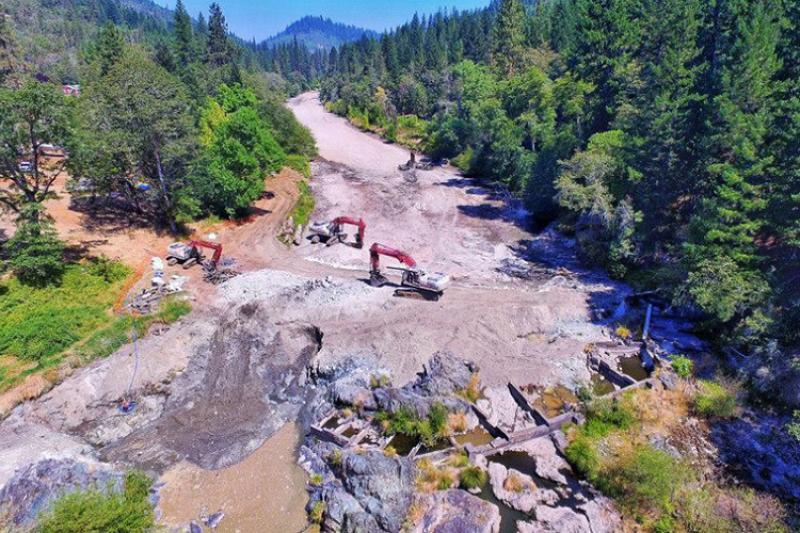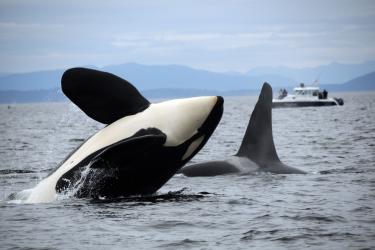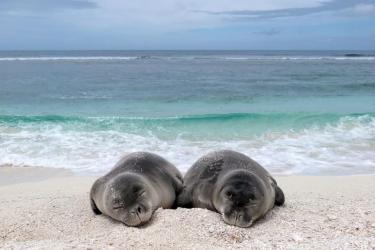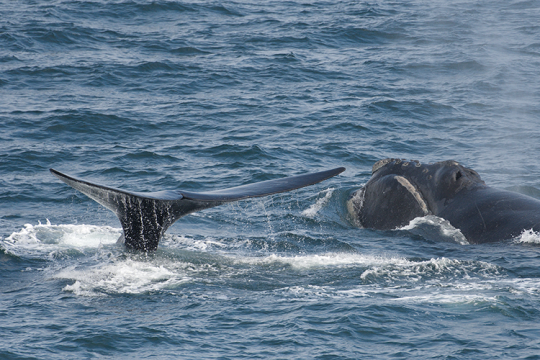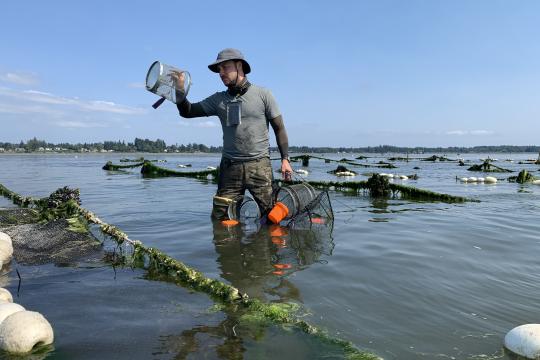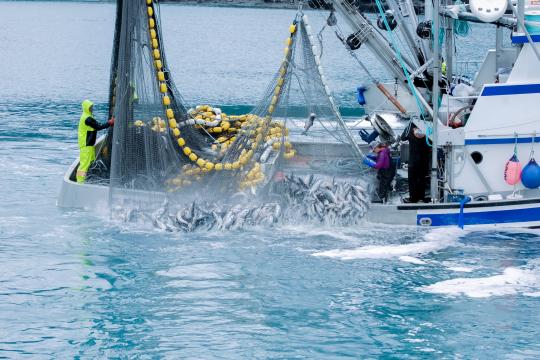To restore habitat for coastal and marine species, NOAA’s Restoration Center is recommending $10.4 million in funding through our Community-based Restoration Program Coastal and Marine Habitat Restoration Grants for 19 new habitat restoration projects and two ongoing restoration awards. These investments will restore habitat in 11 states and territories, leading to lasting results for communities, the economy, and the environment.
By reopening rivers to fish passage, reconnecting rivers to their floodplains, and reducing coastal runoff, these projects will support oysters, corals, and several fish species, as well as three NOAA Species in the Spotlight—Atlantic salmon, Central California Coast coho salmon, and the Southern Resident killer whale. One of the projects recommended for support is also in a NOAA Habitat Focus Area.
In addition to supporting underwater species, investing in habitat restoration leads to tangible, measurable differences for communities by reducing flooding, providing commercial and recreational opportunities, and improving water quality.
NOAA’s Restoration Center, housed within the Office of Habitat Conservation, invests in restoration work that helps recover threatened and endangered species, support sustainably managed fisheries, and strengthen the resilience of coastal communities. Since 1996, our Community-based Restoration Program has partnered with more than 2,900 organizations to take on more than 2,150 projects. These efforts have restored more than 90,000 acres of habitat and opened up 4,070 miles of streams and rivers to fish migration.

In Fiscal Year 2019, we’re recommending funding for 19 new restoration projects and continuing funding for two ongoing restoration awards. Recipients and their partners come from all sectors, including nonprofits; federal, state, and local agencies; tribes; private sector businesses; and academia. Except where noted, amounts listed below are for the first year of project funding. These efforts include:
Pacific Northwest and Alaska
-
American Rivers will remove a diversion dam and restore the river channel in Washington’s Middle Fork Nooksack River, aiding in the recovery of Chinook salmon, steelhead trout, and coho salmon, as well as the Southern Resident killer whale, a NOAA Species in the Spotlight. ($651,038)
-
Rogue Basin Partnership will remove several barriers to fish migration across the Rogue River basin in Oregon, increasing the amount of habitat available for Southern Oregon/Northern California coho salmon, listed as threatened under the Endangered Species Act. ($341,000)
-
The Columbia River Estuary Study Taskforce will restore two sites in Cathlamet Bay, Oregon, as part of a larger, ecosystem-based effort to address factors limiting the recovery of salmon in the Columbia River. Restoration will improve the quality of and access to habitat for Chinook, chum, coho, steelhead, and sockeye salmon. ($449,608)
-
The Washington State Department of Fish and Wildlife Estuary and Salmon Restoration Program will work to restore up to 2,350 acres of estuary habitat and 37 miles of river habitat in the Whidbey Basin of Puget Sound, aiding in the recovery of steelhead and Chinook salmon while balancing agricultural use of the land. ($857,421)
-
The Wild Salmon Center will promote the recovery of Southern Oregon/Northern California Coast coho salmon and Oregon Coast coho salmon—both listed as threatened under the Endangered Species Act—through new and ongoing restoration projects in three watersheds on the Oregon coast. (Year 1 funding for new award: $649,619; Year 3 funding for ongoing award: $767,150)
-
Trout Unlimited will restore access to more than 15 miles of habitat for migratory fish by removing six barriers in Oregon’s Tillamook and Nestucca watersheds. Restoring natural stream processes and fish migration will benefit Oregon Coast coho salmon, Chinook and chum salmon, steelhead and cutthroat trout, and several lamprey species. ($908,112)
Pacific Southwest – California and Hawaii
-
The Nature Conservancy will work to restore habitat for coho and other salmon species in the lower Garcia River and estuary in northern California. Coho salmon in the Garcia River are one of twelve populations within the Central California Coast coho salmon evolutionarily significant unit (ESU), a NOAA Species in the Spotlight. ($331,058)
-
Ducks Unlimited will continue their work restoring estuary and coastal dune habitat along the Eel River in California, helping to promote the recovery of Endangered Species Act-listed steelhead, coho, and Chinook salmon. The project will also increase community resilience to storms and sea level rise. (Year 3 funding: $594,424)

Northeast
-
The Atlantic Salmon Federation will remove barriers to fish migration in Temple Stream, a major tributary of the Sandy River in Maine. Restoring access to high-quality stream habitat will benefit the endangered Atlantic Salmon, a NOAA Species in the Spotlight, as well as American eel, blueback herring, and other species. ($459,083)
-
The Massachusetts Department of Fish and Game will plan for the restoration of Town River by removing the obsolete High Street Dam and replacing the undersized, 200-year-old High Street Bridge. The dam removal and bridge replacement will open 10 miles of habitat for migratory species like river herring and American eel. ($175,000)
-
Friends of Herring River will work to return tidal flow to the Herring River estuary, the largest estuary on outer Cape Cod in Massachusetts. Restoration of the 1,000-acre wetland will occur over a period of time that allows for gradual rebuilding of the salt marsh. ($350,105)
-
The Maryland Department of Natural Resources will place spat-on-shell, or oyster larvae, on up to 100 acres of oyster reefs in five Maryland tributaries of the Chesapeake Bay. Higher oyster density is expected to lead to more habitat for fish like shortnose and Atlantic sturgeon, both listed under the Endangered Species Act. ($800,000)
-
The Virginia Marine Resources Commission will construct and monitor new oyster reefs in the Piankatank River, working toward completion of the river’s oyster restoration goal. Reefs in this area support fish species like Atlantic butterfish, bluefish, summer flounder, and black sea bass. ($540,000)
-
The Jones River Watershed Association will remove the Elm Street Dam on the Jones River in Kingston, Massachusetts. Completion of the project will improve access to habitat for migratory species like river herring, opening close to four miles of habitat in the Jones River and five miles in additional tributary streams. ($100,000)

Southeast and Caribbean
-
Protectores de Cuencas will build on ongoing efforts in Culebra, Puerto Rico—a NOAA Habitat Focus Area—to address sediment from unstabilized dirt roads, which can lead to polluted runoff draining into the ocean and impacting coral reefs. Six to seven miles of dirt roads will be stabilized to address runoff from bare soil areas. ($201,675)
-
Groundwork Jacksonville, Inc. will complete permitting and design plans to improve fish migration in McCoys Creek, a tributary of the St. Johns River in Florida. The project will remove an 850-foot culvert and daylight the stream, creating 4,000 feet of open channel, 11 acres of tidal marsh, and 5.5 acres of open water habitat. ($357,280)
-
The South Carolina Department of Natural Resources will create 13 living shorelines to address habitat loss and erosion in Charleston County. The projects create three acres of oyster reefs and salt marsh along 3,800 linear feet of shoreline, restoring habitat for species such as red drum, summer flounder, and white shrimp. ($201,687)
-
The Nature Conservancy will restore the floodplain and remove barriers to fish migration on the Roanoke River in North Carolina. In addition to restoring habitat for shortnose sturgeon, Atlantic sturgeon, and river herring, the project will reduce flooding and enhance water quality in local communities. ($42,023)
-
The Coral Restoration Foundation will outplant more than 84,000 nursery-grown corals to restore degraded coral reef habitat and promote the recovery of threatened and endangered coral species. The corals will come from existing nurseries and will be secured to the reef using best management practices for coral restoration. ($835,016). Also funded by the NOAA Coral Reef Conservation Program.
-
Mote Marine Lab will restore degraded coral reef habitat and promote the recovery of threatened and endangered coral species in the Florida Keys. The project will grow 10,000 corals across five different species each year, and outplant 30,000 corals by securing them to the reef using best management practices for coral restoration. ($800,000). Also funded by the NOAA Coral Reef Conservation Program.
Note: A prior version of this story stated that NOAA is "recommending funding for 19 restoration projects." The story now correctly indicates that the recommended $10.4 million in funding includes continued funding for two ongoing restoration awards, in addition to funding for 19 new restoration projects.
